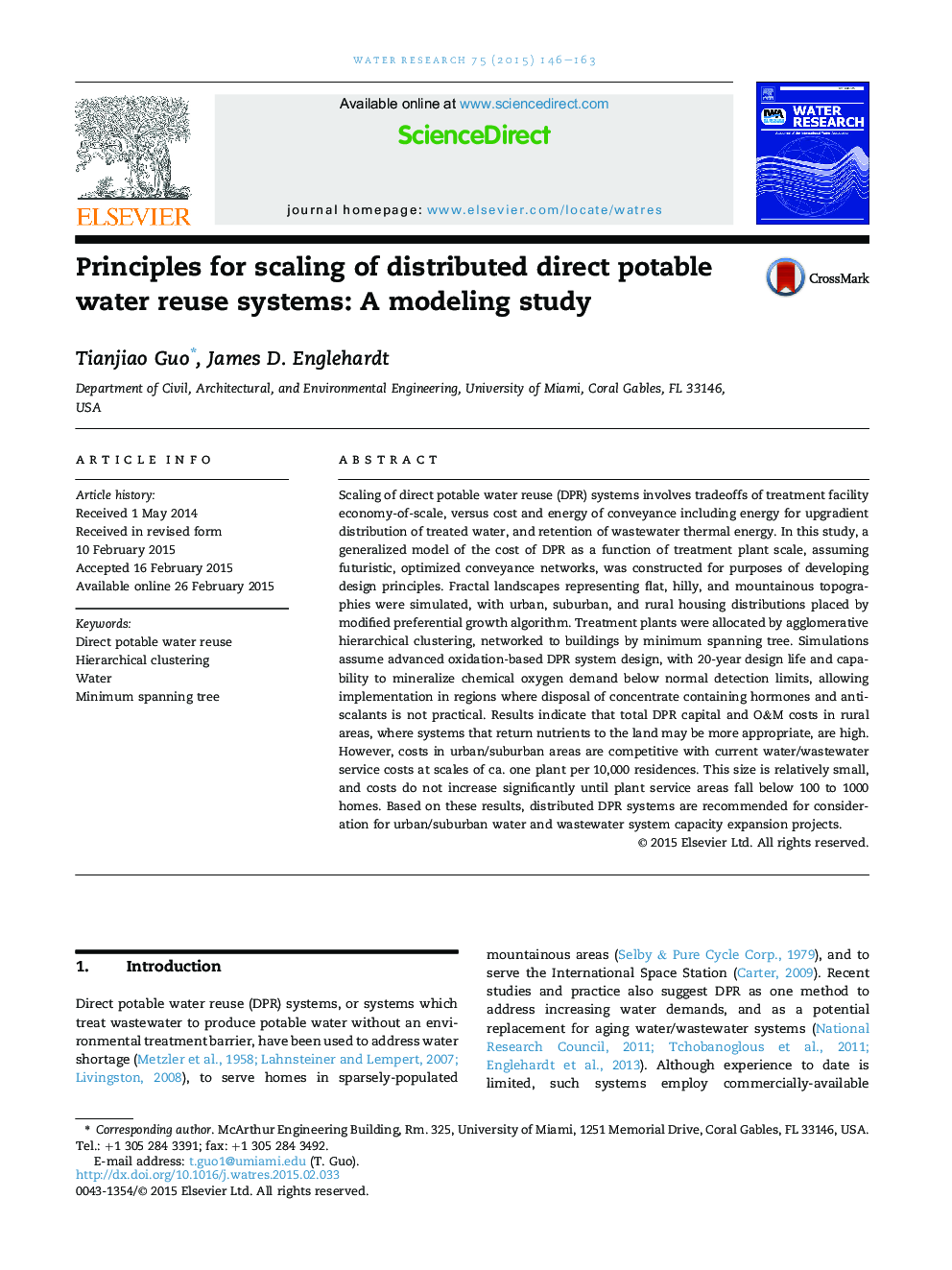| کد مقاله | کد نشریه | سال انتشار | مقاله انگلیسی | نسخه تمام متن |
|---|---|---|---|---|
| 4481208 | 1623093 | 2015 | 18 صفحه PDF | دانلود رایگان |
• We model direct potable reuse (DPR) cost versus treatment plant scale.
• Mineralizing DPR systems are cost-effective in urban and suburban areas.
• Optimal plant service areas scale as low as 100 suburban and 1000 urban dwellings.
• Significant wastewater thermal energy can be retained in the treated water.
• Distributed mineralizing DPR is suggested for urban/suburban capacity expansion.
Scaling of direct potable water reuse (DPR) systems involves tradeoffs of treatment facility economy-of-scale, versus cost and energy of conveyance including energy for upgradient distribution of treated water, and retention of wastewater thermal energy. In this study, a generalized model of the cost of DPR as a function of treatment plant scale, assuming futuristic, optimized conveyance networks, was constructed for purposes of developing design principles. Fractal landscapes representing flat, hilly, and mountainous topographies were simulated, with urban, suburban, and rural housing distributions placed by modified preferential growth algorithm. Treatment plants were allocated by agglomerative hierarchical clustering, networked to buildings by minimum spanning tree. Simulations assume advanced oxidation-based DPR system design, with 20-year design life and capability to mineralize chemical oxygen demand below normal detection limits, allowing implementation in regions where disposal of concentrate containing hormones and antiscalants is not practical. Results indicate that total DPR capital and O&M costs in rural areas, where systems that return nutrients to the land may be more appropriate, are high. However, costs in urban/suburban areas are competitive with current water/wastewater service costs at scales of ca. one plant per 10,000 residences. This size is relatively small, and costs do not increase significantly until plant service areas fall below 100 to 1000 homes. Based on these results, distributed DPR systems are recommended for consideration for urban/suburban water and wastewater system capacity expansion projects.
Figure optionsDownload high-quality image (100 K)Download as PowerPoint slide
Journal: Water Research - Volume 75, 15 May 2015, Pages 146–163
